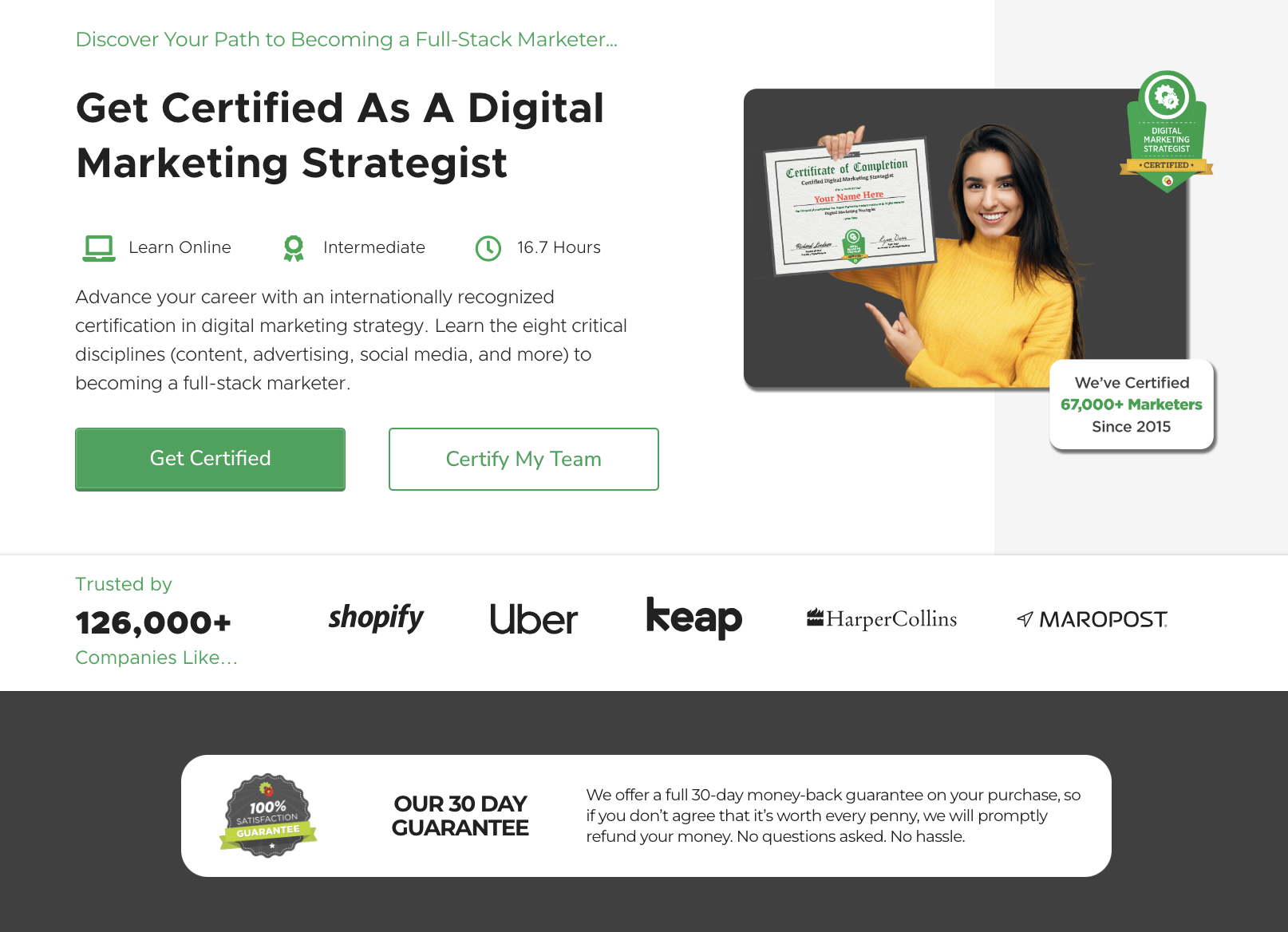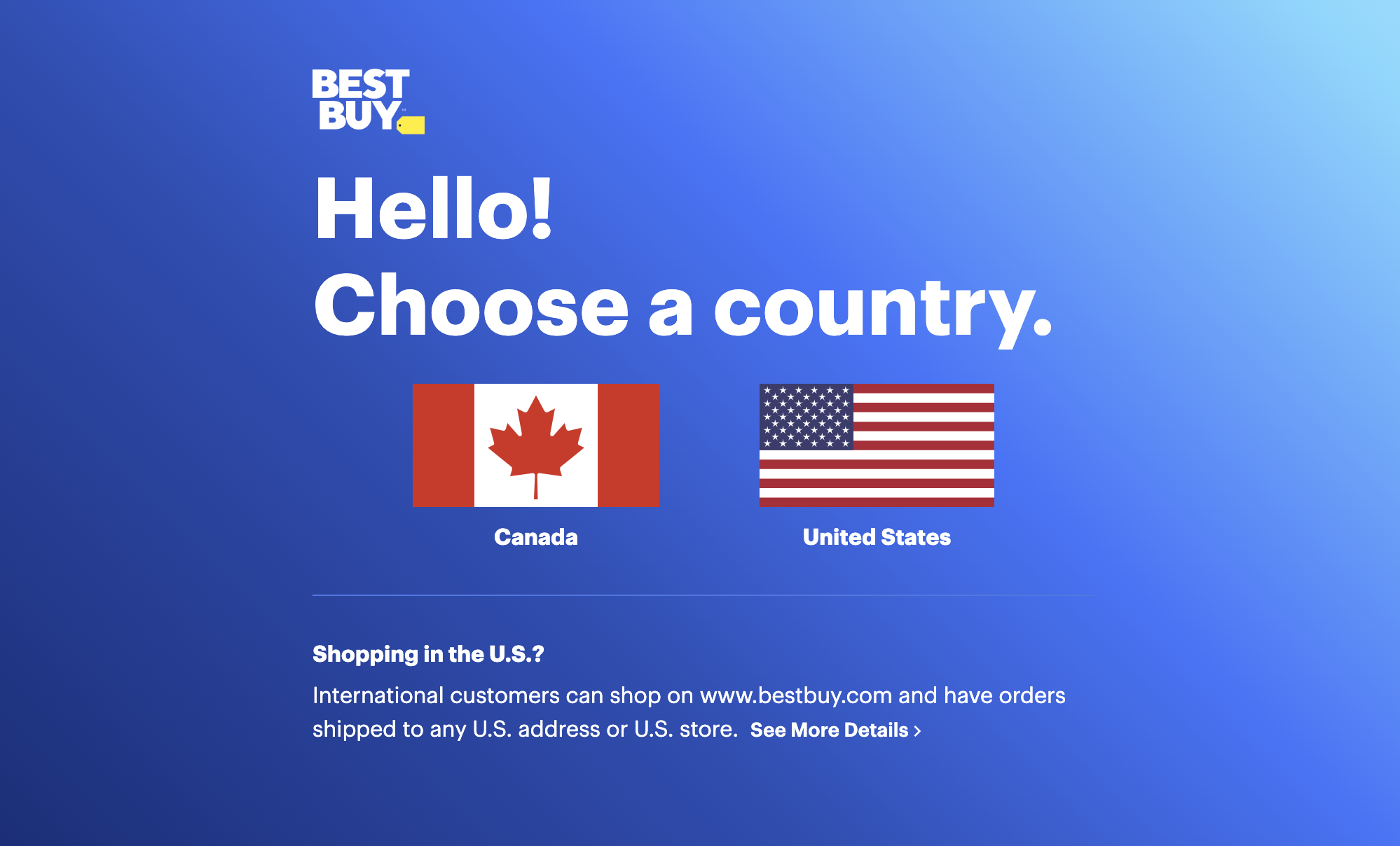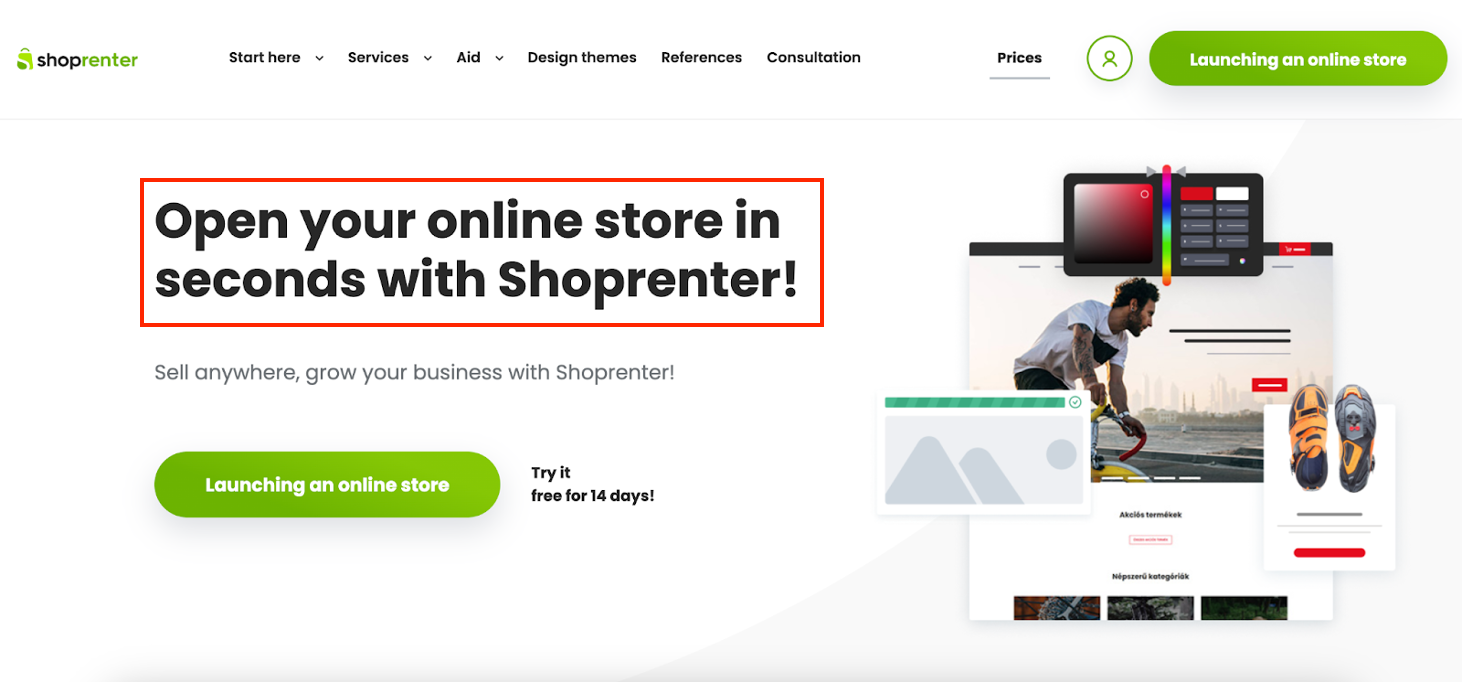- Blog
- Ad Landing Page 101: Essential Elements & Best Practices for Success
Ad Landing Page 101: Essential Elements & Best Practices for Success
-
Nikolett Lorincz
- Marketing
- 6 min read
Table of Contents
You’ve invested time and money into running ads, but your conversions aren’t where they should be. The clicks are coming, but visitors are leaving without taking action. Sound familiar? The problem might not be your ad—it could be your landing page.
If your landing page isn’t optimized to convert, you’re essentially throwing money away with every click.
So, how do you create landing pages that turn traffic into leads or sales?
In this article, we’ll break down the essential elements of a high-converting PPC landing page and share best practices to help you boost your return on ad spend.
Let’s get started!
What is an ad landing page?
An ad landing page is a standalone web page designed with one purpose in mind: converting visitors from your paid ads into leads, subscribers, or buyers.
Unlike your homepage, it’s highly focused, with clear messaging that aligns directly with the PPC ad a user clicked on. Think of it as your sales pitch in web form.
The landing page is where the magic happens—or doesn’t. Get it wrong, and all the money you’re pouring into ads could be wasted.
Types of landing pages
The type of landing page you use should align with your campaign goals and target audience. Let’s dive into the different types of landing pages and when to use each.
1. Lead generation landing pages

Also known as “lead gen” or “squeeze” pages, these landing pages are designed to collect visitor information, typically through a form.
The goal is to gather leads for future marketing efforts—whether that’s signing up for a newsletter, downloading a guide, or requesting a demo.
Lead generation landing pages usually offer something valuable in exchange for contact details, like a free resource or discount.
Best for: B2B marketing, email list building, or capturing leads for a sales team.
2. Click-through landing pages

Click-through landing pages are often used in ecommerce and focus on getting the visitor to take the next step in the buying process. Instead of capturing leads, the goal is to warm up visitors and encourage them to click through to a sales page or checkout.
These pages often feature product benefits, images, and customer testimonials to build trust and excitement.
Best for: Ecommerce campaigns or sales funnels where the goal is to direct visitors to a product page.
3. Sales landing pages

Sales landing pages are long-form pages that aim to convince visitors to make a purchase directly on the page.
They tend to have in-depth content, multiple CTAs, and persuasive elements like testimonials, case studies, and social proof.
These landing pages are often used for high-ticket items or services that require more detailed information before a purchase decision.
Best for: High-value products or services, where the goal is to convert leads into paying customers on the spot.
4. Splash pages

A splash page is a simple, brief page that acts as a “gate” before allowing visitors to access the main content. It might ask the visitor to select a language, enter their age, or provide a choice between different categories of content.
These pages aren’t designed for lead generation but are useful for funneling visitors to the right part of your site.
Best for: Websites with multiple entry points or content types, or campaigns requiring age verification or specific information before entry.
5. Thank you pages

After a visitor completes an action on your landing page, the thank you page serves as a confirmation and next step.
These pages are often underutilized but can be optimized to keep users engaged. You can offer additional resources, encourage social sharing, or suggest other products or services.
Best for: Any campaign where lead nurturing is important, especially after a visitor has completed a form or made a purchase.
6. Product launch pages

When launching a new product, you need a dedicated landing page that builds excitement and explains the product’s benefits.
These pages focus on generating buzz, showcasing the product’s features, and encouraging visitors to take action—whether that’s pre-ordering, signing up for updates, or purchasing.
Best for: New product announcements or promotional campaigns that require strong storytelling and visual appeal.
How to create high-converting landing pages for Google Ads
Let’s walk through the essential steps to create landing pages that are effective.
Step 1: Understand your audience
Before you design anything, you need to know who you’re talking to. Your landing page should speak directly to your target audience’s pain points, desires, and needs.
What keeps them up at night? How can your product or service solve their problems?
This is critical because a one-size-fits-all approach won’t work. The better you understand your target audience, the more you can tailor your message, making them feel like your solution is exactly what they’ve been looking for.
Step 2: Align ad copy with landing page content
Ever clicked on an ad expecting one thing, only to find something completely different on the landing page? That disconnect can be jarring and sends conversion rates plummeting.
Consistency is key. Your ad copy sets an expectation, and your landing page needs to meet or exceed it.
Ensure that the headlines, promises, and overall messaging from your ad are reflected on the landing page. This builds trust and reassures the visitor that they’re in the right place.
Step 3: Optimize for mobile
In 2024, it’s no secret that most users are browsing on mobile devices. If your landing page isn’t mobile-friendly, you’re missing out on a huge chunk of potential conversions.
Mobile optimization and responsive design aren’t just nice to have, they’re essential. Make sure the page loads quickly, looks great, and is easy to navigate on smaller screens.
Step 4: Don’t forget about speed and performance
When it comes to landing pages, every second counts. Studies show that even a one-second delay in page load time can result in a 7% reduction in conversions.
Optimize your images, streamline your code, and use a reliable hosting provider to ensure lightning-fast load times.
7 essential elements of high-converting PPC landing pages
Now that you have a roadmap for creating landing pages, let’s dive into the must-have landing page elements that can lead to higher conversion rates.
1. Clear and compelling headline
Your landing page headline is the first thing visitors will see, so it has to grab attention and communicate value in a split second. Be clear, direct, and make sure it addresses the visitor’s problem or the benefit of your solution.
For example, instead of saying “High-Quality Marketing Services,” try something more benefit-driven like, “Get More Leads with Our Expert Marketing Strategies.”
2. Concise, persuasive copy
Less is more. Your landing page copy should be sharp, concise, and persuasive. Focus on benefits, not features, and keep the language simple.
You’re not trying to educate visitors about every aspect of your product, you’re showing them why it’s the best solution.
3. Strong call-to-action
Your call-to-action is where the magic happens—it’s what turns visitors into leads or customers.
The best CTAs are clear, direct, and action-oriented. Use language that creates urgency or excitement, like “Get Started Now” or “Claim Your Free Trial.”
And don’t forget about placement—your CTA should be prominent and easy to find, ideally above the fold and repeated throughout the page.
4. Trust indicators
People are more likely to convert if they feel safe and confident in their decision. Adding trust indicators such as customer testimonials, reviews, security badges, or satisfaction guarantees can reduce friction and give potential customers the reassurance they need.
5. Eye-catching design
First impressions matter. Your landing page design should be clean, visually appealing, and easy to navigate.
Use whitespace strategically to guide the visitor’s eye to your most important elements, like the headline and CTA. Make sure your design doesn’t overwhelm—minimalism can often be more effective.
6. Lead capture forms
Your form is the gateway to capturing leads, so you need to get it right. Ask for only the most essential information—too many fields can be overwhelming.
Consider using progressive profiling if you need more data over time, and always make the form as simple and user-friendly as possible.
7. Minimal distractions
When a visitor lands on your landing page, their only option should be to either convert or leave.
Avoid adding unnecessary navigation menus, links, or elements that could pull them away from the action you want them to take. Keep the focus on your call-to-action.
Best practices for landing page optimization
Creating a landing page that converts is a great start, but it’s only half the battle. The most successful campaigns continuously test, refine, and optimize their landing pages to squeeze out every last conversion.
Here are three key conversion rate optimization strategies to help you get better results from your landing pages, backed by real-life examples that highlight their impact.
1. A/B testing
A/B testing, also known as split testing, is one of the most powerful tools for improving your landing page performance. It involves creating two versions of a page (or a specific element on the page) and testing them against each other to see which one converts better.
With A/B testing, you can experiment with different headlines, images, calls-to-action (CTAs), color schemes, form lengths, and layouts.
The key is to only test one variable at a time so you can accurately pinpoint what caused the improvement or decline in performance.
Take Vegetology, for instance. They A/B tested the headline on their home page. The original headline, “It’s in our nature,” was swapped out for “We are Vegetology.” This subtle change in copy boosted the conversion rate by 9%.

Pro tip: Regularly run A/B tests on your highest-traffic PPC landing pages, especially with critical elements like the call-to-action, headline, or hero image. Even minor tweaks can result in substantial lifts in conversion rates.
2. Website popups
Popups can be controversial, but when used wisely, they’re incredibly effective at generating leads and preventing prospective customers from leaving your web pages.
Exit-intent popups, in particular, are a smart strategy for landing pages. These popups appear when a visitor’s cursor moves toward the top of the page, signaling that they’re about to leave.
A well-timed popup can offer a compelling reason to stay—like a discount, free trial, or valuable resource in exchange for contact information.
For example, Nexus Sports Nutrition uses an exit-intent popup across their landing pages and product pages to offer a mystery discount just as visitors are about to leave. By offering value at the last second, they were able to recover 11.78% of visitors that would have otherwise been lost.

Pro tip: Don’t bombard visitors with multiple popups. Limit it to one or two strategic points in their journey—like after they’ve engaged with the content or are about to leave the page.
If you’d like to get started with website popup, take a look at these templates:
3. Personalization
Personalization can take your landing page from average to outstanding. Today’s consumers expect content that speaks directly to their needs, and personalizing your landing page can make all the difference in boosting conversion rates.
Personalization involves tailoring your content, offers, and messaging to different audience segments based on factors like demographics, location, behavior, or where they are in the buyer’s journey.
Millie n Me, for example, uses popups to display personalized product recommendations and copy to convert visitors. This type of personalization creates a seamless, relevant experience that keeps users engaged and drives higher conversions.

Here are some product recommendation popup templates you can use if you’d like to try this personalization strategy:
Another example is Shoprenter. They tailor landing pages to match ad messaging and search intent automatically.
People who searched for “opening an online store” and clicked on Shoprenter’s ad saw the following message:

However, those who were looking at an alternative by searching for the “shopify” keyword, saw the following message:

Pro tip: Use tools like OptiMonk AI to personalize landing page headlines based on the search query or ad copy that brought the user to the page. This creates a more relevant experience for the visitor, increasing the likelihood of conversion.
Wrapping up
Creating a high-converting PPC landing page is an art and a science. By following these steps and incorporating the essential elements, you’ll be well on your way to turning clicks into conversions.
Remember, a landing page isn’t a “set it and forget it” part of your marketing strategy. Regularly test and refine it to maximize performance—and don’t be afraid to get creative.
Now that you’re armed with this knowledge, it’s time to start building a landing page that delivers the results you want.
Migration has never been easier
We made switching a no-brainer with our free, white-glove onboarding service so you can get started in the blink of an eye.

What should you do next?
Thanks for reading till the end. Here are 4 ways we can help you grow your business:
Boost conversions with proven use cases
Explore our Use Case Library, filled with actionable personalization examples and step-by-step guides to unlock your website's full potential. Check out Use Case Library
Create a free OptiMonk account
Create a free OptiMonk account and easily get started with popups and conversion rate optimization. Get OptiMonk free
Get advice from a CRO expert
Schedule a personalized discovery call with one of our experts to explore how OptiMonk can help you grow your business. Book a demo
Join our weekly newsletter
Real CRO insights & marketing tips. No fluff. Straight to your inbox. Subscribe now
Nikolett Lorincz
- Posted in
- Marketing
Partner with us
- © OptiMonk. All rights reserved!
- Terms of Use
- Privacy Policy
- Cookie Policy
Product updates: January Release 2025








